Golf Ball Details

Welcome to Golf Ball Details
This is where we discuss in great detail, the design and manufacture of the various balls available on the market today. Through dedicated research and development and the advancement of both materials and technology, manufactures have learned that they can control the performance of a golf ball by constructing multiple layers or “pieces” designed specifically to perform at the expected impact velocity of various swing speeds.
So, what does that means when you’re standing in the golf shop trying to decide which ball will most help your game?
Understanding how each ball is designed to perform will help you to make a more educated decision on which ball is best suited for your game based on your unique swing characteristics.
This page is pretty long so make good use of the Table of Contents and the built in navigation links to find your way around the page. The TOC will link you to each section and we provide you also with links to get back to the TOC as well.
Now let’s learn more about Today’s Balls
~ USGA and R & A Regulations
Following the original standards set by the R&A (Royal & Ancient of St. Andrews), on January 1, 1932 the USGA (United States Golf Association) set the current standard for today’s ball. It can weigh no more than 1.620oz. (or 45.93 grams), and have a diameter of at least 1.680 inches (42.67mm), and it must perform within specified limits for velocity (250 feet per second), distance, and symmetry. Any ball that does not conform under rigorous testing by both the R&A and the USGA may not be used in competition.
The exception to the USGA standards set in 1932 was the acceptance of the use of the smaller ball (often called the “British” Ball) until 1990 in tournaments under the jurisdiction of the R&A.
Return to Table of Contents
~ Non Standard and Novelty Balls
Although there are some non-conforming balls designed specifically to give golfers an “edge”, for the most part Non-Standard & Novelty Balls” are used primarily for practical jokes to play on your fellow golfers or amuse anyone who may happen to be watching.
You cannot use of any these balls in formal competitions, but they can be fun when used at the right time during informal play. Now let’s take a look at these Non-Conforming & Novelty Balls and see what they do.
- Streamers unravel into ribbon of up to 12 feet or more after being struck (no worries though as the streamers will wash away the first time water from the sprinklers or rain hit them).
- Breakaway Balls are brittle and hollow, and shatter into small pieces when struck.
- Exploding Balls are similar to the breakaway balls, but actually explode when struck. Previous examples of this ball actually had a small explosive device that would disintegrate the ball upon impact, but many courses banned these as the charge could damage the turf, the player's club or even cause injury – so now “Exploding Balls” pretty much just disappear in a cloud of dust when struck. (this dust also washes away with water just like the streamers in the first ball listed).
- Water Filled Balls are packed with water and create the illusion of evaporating when struck
- Laughers are golf balls that laugh and giggle while in motion
- Stallers are softer than a normal golf ball and compress more easily and have greater backspin when hit. These two effects provide for much more lift on the ball and produce shots that climb very high into the air with very little distance traveled over the ground. If the wind is right, these balls may actually travel backwards along their flight path or even perform a loop-de-loop.
- Floaters are less dense than a regulation golf ball and will float and bob on the surface when hit into water. You often see these balls at novelty driving ranges that have you hitting at floating greens, or just to yardage markers in the water.
- Wobblers have a center of mass that is not in the exact center of the ball or is loose within the ball. When putted, the ball will move unpredictably or wobble along the “intended” line.
- Sponge Balls are softer still; they are generally used as indoor or backyard practice balls, but some are deceptively similar in appearance to a normal ball. These balls will usually travel less than a quarter of the distance of a normal golf ball.
- Super Distance Balls have deeper dimples and are heavier than allowed by USGA regulations, which allows them first to maintain momentum and second to maintain a thicker "envelope" of still air around them which reduces turbulence and wind resistance. Marketers of these balls generally advertise a 12-yard gain on most distance shots, and are often pulled out of a player’s bag when reaching the “Long Drive” hole of your Charity Scramble Events.
- Night Golf Balls that glow in the dark are either luminous balls or have glow sticks inserted into them.
Return to Table of Contents
~ Air Flow Aerodynamics
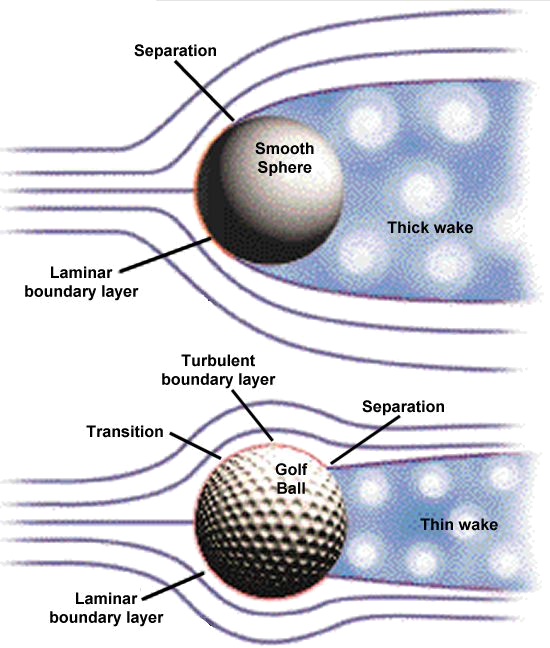
So what purpose do the dimples serve on the surface of a golf ball? It turns out that the “turbulence” they cause in the air flow over the ball’s surface help it to travel straighter and farther than if the surface was smooth like a ping pong or pool ball.
The ball’s velocity, launch angle, and spin rate are all determined in that millisencond of impact when the ball is struck by a club, and they all influence its trajectory and how it behaves both in the air and when it hits the ground.
As the ball travels through the air it is affected by the two major forces of lift and drag and it turns out that dimpled balls travel farther and straighter than non-dimpled balls due to the combination of two effects:
Now stay with us on this part ‘cuz it gets pretty technical
- The First Effect is: Air flowing directly across the ball’s surface is know as the Boundary Layer, and the dimples cause the Boundary Layer on the upstream side of the ball to transition from laminar to turbulent. This turbulence allows the boundary layer air to stay attached to the surface of the ball a lot longer than the air in a laminar air flow and it creates a narrower, low-pressure wake on the ball and produces less drag. That reduction in drag allows the ball to travel much farther.
- The Second Effect is: A properly struck golf ball imparts the Magnus Effect on the ball where backspin generates lift by deforming the airflow around the ball. Every club in your bag has some degree of loft (the angle of the club face in relation to the vertical plane), and therefore imparts backspin to every shot you hit. When you hit the ball pure with the right swing arc and a square club face, the result is the proper and desired backspin that causes an upward lift force on the ball making it rise higher and fly straighter. The converse though is that the dimples can also have the exaggerated effect of causing improperly hit balls to fly farther offline by the influence of the dreaded “sidespin” on the ball.
This video visually illustrates the impact
dimples have on the flight of a golf ball.
And it's not nearly as boring as that sounds!!
The 9 Possible Ball Flights
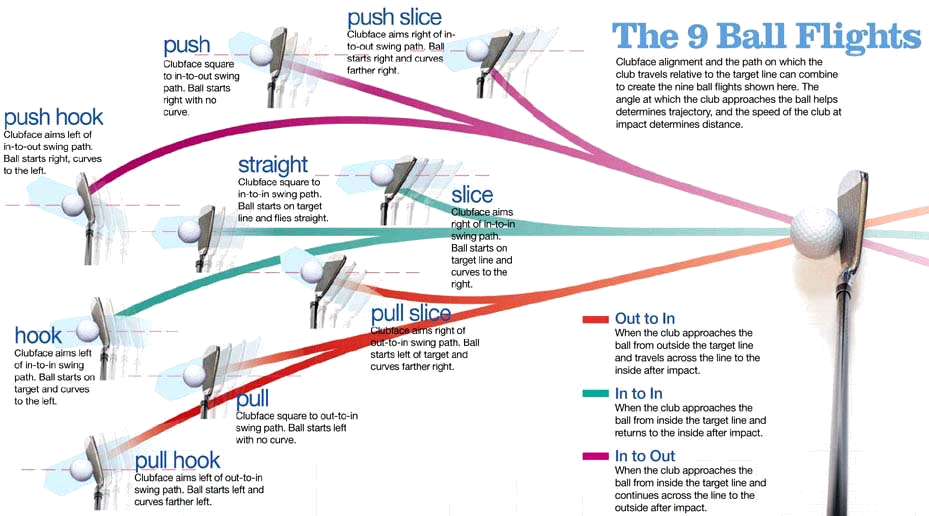
It’s critical to use a ball in good condition because these forces and their affects on the ball’s flight occur at such a small level that any defects to the ball’s surface from scratches or dirt can negatively impact the ball’s performance.
Return to Table of Contents
~ Golf Ball Terms
- The Cover – is the outer surface of the ball
- The Dimples - are the small markings on the outer cover, usually 300-500 of them that help to control the aerodynamics for lower or higher trajectory, spin and ball flight.
- Compression - Is a rating given a ball in respect to how much it deflects (or changes shape) under a compressive load.
- The Mantle - Is a layer of ionomer between the core and the cover usually used to control the spin at high-speed impacts.
- The Core - Is a solid rubber or liquid center that makes up the main part of golf ball and helps to control the distance.
- The One-Piece Ball - Is made from one solid mould.
- The Two-Piece Ball - Has a cover and a core.
- The Three-Piece Ball - Has a cover and either a core inside a core, or a core surrounded by a mantle.
- The Four-Piece Ball - Has a cover and either dual cores and a mantle, or a single core and dual mantles.
- The Five-Piece Ball - Is the latest improvement on the vastly popular Four-Piece Ball
Return to Table of Contents
~ Golf Ball Types
- Distance Balls are designed for the purpose of giving greater distance off the tee and on all longer shots. To achieve that distance though the ball will usually sacrifice control and feel on shorter shots and around the green. These balls usually have a 2-piece design and will appeal to anyone looking for those extra few yards off the tee and is not concerned with “feel” and “control” around the green.
- Spin Balls fly higher and will stop better on the green with good backspin for control in “checking” the ball or even backing it up. This is the preferred ball of low handicappers and Tour Pros willing to sacrifice a little distance to work with a higher performance ball that allows them to shape and control shots into and landing on the green. Spin Balls usually fall into the category of the “Total Performance Balls” discussed below.
- Spin Control Balls are aerodynamically designed to reduce spin to help more erratic golfers manage their tendencies to hook or slice the ball.
- Total Performance Balls provide for the ultimate balance of spin, distance and control. These balls are usually the multi-layer, multi-construction golf balls preferred by better players, including low-handicappers and Tour Professionals.
Return to Table of Contents
~ Golf Ball Compression
You may notice some golf balls show their compression ratings of 80, 90 or 100 etc. Originally, manufacturers used this as a measurement of the quality of 3-piece balls, back when a long piece of rubber was stretched around the core. Usually about a 20 meter piece of rubber was stretched to approx. 20 times of its original length and was then wound around the core to give the ball its desired compression. People thought that the tighter the rubber was wound, the better the ball performed. This thought gave rise to the belief that a ball’s compression had a direct affect on the ball’s distance and performance. This belief has all but been rendered obsolete though with the latest technology employed in making today’s golf balls.
- By Definition - the word "compression" in the golf ball industry today relates to a value expressed by a number in the range from 0 to 200 given to each ball as it reacts to the force of a compressive load. That compression measures how much the shape a golf ball changes under a constant weight.
- By Measurement - Any ball that does not compress gets a rating of 200 and any ball that deflects 2/10ths of an inch (or more) scores zero. In between those two extremes the rating subtracts 1 point from 200 for every 1/1000th of an inch that the ball compresses, with most balls falling on a rating of 80, 90, or 100. All three-piece balls and some two-piece balls are measured for compression and given that score somewhere in the range of 0 to 200. The lower the compression rating, the softer the ball will feel. However, there is a three to five point margin for error when testing at this finite level and not all balls marked 80, 90, or 100 will actually be that exact rating. Any balls that fall out of this range are usually sold as range balls, as X-outs, or as practice balls.
Return to Table of Contents
~ The Golf Ball Cover
Today's golf balls have covers made from a few different materials, such as Balata, Surlyn, Zylin, or Elastomer. Manufacturers keep searching for that perfect combination that will create the ultimate ball that serves the needs of every golfer out there. Since that challenge is logistically impossible to achieve, ball makers have given us the staggering variety of balls available today. <p>When it comes to the cover, however, the choice is some form of rubber-like material that behaves in a manner consistent with how the manufacturer wants that ball to perform, whether a distance, control or spin ball.
These are the four cover materials used most often in today’s balls.
- Balata is a type of natural rubber and the softest of all other cover types, Balata is less cut resistant. However, with all other aspects of construction being equal, a Balata-covered ball will spin easier and is preferred by players who demand maximum feel and control. This means more control over shots where the action of the ball is critical.
- Surlyn was the first and most durable cover material that revolutionized the construction of the golf ball when it was introduced in the early 80's. It is a trade name for a group of thermoplastic resins developed by the Du Pont Corporation. Most manufacturers of durable covers use either Surlyn or a similar material blend. The emphasis today is to provide both durability and feel.
This durable cover offers better cut and abrasion resistance than the Balata cover. A Surlyn covered ball generally feels harder than Balata covered balls and that “hardness” of this cover material accounts for a lower spin rate.
- Zylin is Spaulding's version of Surlyn, an inexpensive, durable synthetic polymer plastic used as a cover material on certain Top Flite and Strata golf balls.
- Elastomer is a polymer which has the elastic properties of rubber and is a material used in the formation of golf balls, most notably made by Titleist™. A variety of this material is also used in the manufacture of Winn™ grips, and for inserts on the face of some putters.
Return to Table of Contents
~ Golf Ball Construction - Peeling Back The Layers
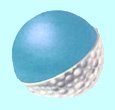 2 Piece Golf Ball 2 Piece Golf Ball |
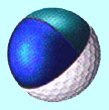 3 Piece Golf Ball 3 Piece Golf Ball |
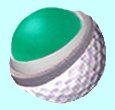 4 Piece Golf Ball 4 Piece Golf Ball |
Golf ball manufacturers spend countless millions on research and development and the construction of golf balls in an attempt to meet the needs of every golfer and every swing type out there. The result is the sometimes overwhelming variety of golf balls available on the market today.
We have already discussed the basic design and the purpose behind their construction, but now lets peel back the “layers” and see what they actually put inside these various balls.
Golf balls today have anywhere from one to five layers or pieces in their construction, depending on the desired performance the manufacturer is attempting to achieve and what level of golfer they are trying to target. Now let’s take a look at what comprises each of these balls in their basic design.
Return to Table of Contents
~ One Piece Golf Balls
Are made with only one material from the cover right through to the core. Golf balls which are referred to as “one-piece” are simply constructed with the same type of material, from the external layer right through to the core. These balls are typically made from a solid piece of Surlyn with dimples molded into the outer surface. They are inexpensive, very durable, and the lowest quality balls available. On impact with the club face, the one-piece ball has a softer feel, making them the perfect choice for driving ranges and for absolute beginners just taking up the game of golf who are not yet ready to invest any “real” money in the balls they use.
Return to Table of Contents
 2 Piece Golf Ball
2 Piece Golf Ball~ Two Piece Golf Balls
This is the type of ball preferred and used by most golfers out there because most of the people who play this game do not swing their drivers in excess of 90mph, or shape their shots, or need “checking” action and backspin on the greens. The two piece ball provides extra distance and usually less spin to minimize errant shots due to the dreaded side-spin amateur golfers often put on their ball from off-plane swings.
Two-Piece balls consist of a single solid core of some type of hard plastic, resin, or high-energy acrylate and are then typically covered in tough, cut resistant Surlyn (a specialty plastic proprietary to the Du Pont Company). This ball is preferred by the “everyday” golfer because it combines great durability with a straighter shot and the maximum distance their slower swing speeds can achieve. The trade off is that, due to their lower spin rate, these balls are more difficult to control on shots into and around the green.
This is the ball of choice for those looking to add both accuracy and greater distance with the driver and long irons. These balls also tend to be tougher and more durable so short of losing them in a water hazard, long grass, the woods, or someone’s backyard, patio, or swimming pool, they can be played longer before needing to be replaced.
The 2-Piece ball category can be broken down into the three subcategories of Distance, Low Compression, and Performance:
Return to Table of Contents
~ Two Piece Distance Balls
- The fact that they spin less is both the best and the worst thing about the 2-Piece Distance Balls. It’s your best advantage when teeing off and on long shots where you want more distance and a straighter ball flight, but the less spin they produce to get those results also provides less control around the greens. They may also launch higher since their firm polymer cover tends to slide up the club face just a little at impact. Another strong advantage though is that they are much less expensive, usually around a dollar a ball or less and their tough cover last longer so you spend much less on balls.
Examples: The Callaway Warbird, Pinnacle Gold, Slazenger Raw Distance Fusion, Top-Flite XL Pure Distance, and the Wilson Jack.
Return to Table of Contents
~ Two Piece Low Compression Balls
- The lower compression rating of these balls can produce greater distance for golfers with moderate swings speeds (about 80 to 100mph, and the lower spin rate does provide more accuracy, but that “softer feel” does not necessarily translate into better control and more feel around the greens.
Examples: The Dunlop LoCo; Maxfli Noodle; Nike Power Distance Super Soft; Precept Lady and Laddie; and the Titleist DT SoLo.
Return to Table of Contents
~ Two Piece Performance Balls
- These balls make the attempt to provide the advantages of higher priced balls but at the 2-Piece ball price. Their larger cores mandate the balls have a thinner cover which can add to the ball’s compression and provide greater distance, but these balls still cannot provide the spin control of the more expensive multi-layer balls.
Examples: The Callaway CB1 and HX 2-Piece; Maxfli A3; Slazenger Tour Platinum; Srixon Hi-Spin and Soft Feel; Titleist NXT and NXT Tour; Top-Flite Infinity; and the Wilson True Velocity. Price range.
Return to Table of Contents
 3 Piece Golf Ball
3 Piece Golf Ball~ Three Piece Golf Balls
Three-piece balls usually have a softer outer cover, one or two inner layers, and a solid or liquid core. These “extra” layers give these balls a higher spin rate which helps to provide more control and the ability to “shape” shots into and around the greens. The sacrifice for that control is a softer ball that will cut more easily and will not last as long in play. Tour Professionals, Scratch Golfers and Lower Handicap Players who can shape and control their shots prefer this type of ball.
This ball gives the better players more control over their short game, yet still provides enough distance for players with the higher swing speeds. The prices are starting to climb though as you enter this category, and the softer covers will not last as long in play, but generally speaking the skill level of the players this ball targets will lose less balls in play.
Example: The Titeist Pro V1 is a good example of a preferred Three-Piece Ball.
Return to Table of Contents
 4 Piece Golf Ball
4 Piece Golf Ball~ Four Piece Golf Balls
This ball takes all the benefits and performance of the Three-Piece Ball just one step further. To that basic design of the Three-Piece Ball manufacturers have added a second firm mantle layer. This additional layer transfers more energy at the moment of impact into the core for more low spin distance, but retains the high spin rate on less impactful shots for better control around the greens. <p>Only players with exceptionally high swing speeds (in excess of at least 105mph) will benefit from the “extra” layer of these balls as it takes a powerful impact to compress the ball enough to reach the benefits that deep core can provide.
Examples: Ben Hogan Apex Tour; Callaway HX and CTU 30; Maxfli M3; Nike TA2, Double C and One; Precept U-Tri and Tour Premium; Srixon Pro UR and UR-X; Strata series; Titleist Pro V1 and Pro V1x; Top-Flite Tour; Wilson True Tour V and Elite.
Return to Table of Contents
~ Five Piece Golf Balls
Just like the Four-Piece Ball improved on the benefits provided by the Three-Piece Ball, Taylor Made has now pushed the envelope just a little further by adding another layer and introducing the Taylor Made Penta - 5-Piece Golf Ball. That “extra” layer improves on the “additional” layer in the Four-Piece Ball by adding more distance for the higher swing speeds that can “reach” the inner core at impact, while still providing the soft feel and spin required to shape and control shots into and around the greens.
Return to Table of Contents
~ Wrapping It Up
Golf Ball Manufacturers learned that by taking into account which layer of the ball will be affected by compression at various impact velocities, they could optimize each layer to perform at the expected level of compression.
That means that by adding layers designed to target various swing speeds, they can manufacture balls that can provide a low compression inner core for greater distance at those higher swing speeds, a soft cover and first inner layer for the short shots, all while the second and third layers are optimized for play with the mid irons.
In short – the more layers a ball has the more “The Better” players will benefit from its use. But if you don’t swing the club at least in excess of 100mph and/or you can’t “shape your shots” by controlling trajectory and side spin, then don’t (yet) waste your money on the cost of these balls. Stick to the less expensive balls and give yourself time to learn better technique while you enjoy the game at your current level.
~ ~ ~ ~ ~ ~
It's pretty certain that Golf Ball Technology will continue to push the envelope as new materials and technologies are discovered, so we’ll see what the future holds, but for now this is a pretty complete education on the Golf Ball as we know it today.
Return to Table of Contents
~ Choosing The Right Ball
If you’ve taken the time to read through all of the material above, then it’s pretty clear you take your golf seriously and spend some time refining the game qualities that will improve your play and enhance your enjoyment of the game.
With that said, the basic questions asked at the bottom of the Golf Balls Page will still be your guide to finding the right ball – but now with the added benefit of knowing a little more specifically which balls in each category will appeal to you the most.
Get as technical as you desire, but always remember the K.I.S.S. principle (Keep It Simple Stupid), because too much analysis in choosing your golf ball, just like in over-thinking your swing, will only bring confusion, frustration, and heartache.
- If you’re a beginner or a high-handicapper, or you generally lose a lot of balls and can benefit most from more distance and straighter shots, then stick with the 2-Piece Ball Category and shop for Value Performance Balls generally costing less that $20 per dozen.
- If you’re a mid to low-handicapper who has some control over your game and is looking to take the next step in scoring better through shaped shots and control around the green – then try the 3-Piece Ball Category and shop for Premium Performance Balls for between $20 and $40 per dozen.
- If you’re a low-handicapper or scratch golfer, with a higher swing speed, and you like to shape shots and need that quality control around the greens – then the 4-Piece Ball Category or the Taylor Made Penta 5-Piece Ball should be your choice- and you’ll want to shop for the Tour Performance Balls which will run north of $40 per dozen.
- If you’re a woman or have a very slow swing speed (less than 80mph) – then the balls in the "Women's Balls" Category will benefit you the most.
Return to Table of Contents
Now take your new knowledge and understanding of the golf ball to an educated purchase of your next dozen balls.
Use the Amazon link below to find your favorite ball or one you think you'd now like to try based on what you just learned here on our Golf Balls Details page.
Did you find this page helpful?
Did you learn something in which you believe others might find value?
If so, please pay it forward and share this page using the Social Media Options provided, and/or leave a comment others may appreciate.
Thanks for sharing!!
Join GolfNow's GolfPass Program
For Great Savings on ALL your Golf
Return to The Top of This Golf Ball Details Page
Go to The Golf Balls History Page
?? Your Own Website ??
Is there a topic or a hobby for which you have a strong passion?
Have you ever considered turning that passion into a passive income stream?
Have you ever considered creating a web site like this one?
I researched long and hard for the best resources available on the web to assist me in making The-Golf-Experience.com a reality and I found none better than Solo Build It with whom to partner.
Above and beyond the comprehensive program they provide to assist you on your journey is the incredible level of customer service you'll get along the way. The world would be a better place if every company out there modeled the quality and level of their customer service after what Solo Build It seems to provide with such ease.
Watch the video below to see if your interest in creating your own web site gets a spark.
You ready?
Now click the "Solo Build It!" link below to begin your own journey.
Good luck and have some fun.
© Copyright The-Golf-Experience.com
"When Health is absent, wisdom cannot reveal itself, art cannot become manifest, strength cannot be exerted, wealth is useless, and reason is powerless."
Herophilos 335-280 B.C.
All athletes require the performance components of: strength, power, endurance, flexibility, coordination, balance, good posture, and mental conditioning to perform at their best.
Stay Healthy - Play your Best
~ ~ ~
Visit our Fitness Page to learn more!
Start investing with Acorns today and they'll add $5 to to your account to help you get started - You won't retire on their contribution ... but $5 is still $5
Visit our page on Golf Balls to learn ALL you need to know to determine which ball is best suited to your unique swing speed and style of play.
Then visit Lost Golf Balls below to buy used golf balls in the quality suited to your game and the quantity required to keep your bag full.
Find Inexpensive Gas with Gas Buddy
If you really want to save at the pump though - Get yourself a Pay With Gas Buddy Card.
Join for free to save $.05 per gallon or get a Plus or Premuim Membership to save $.20 per gallon.
Points are awarded for each score on every hole. You can use any modification for points awarded (or subtracted) on every hole, but the R&A and the USGA award points as follows:
If you appreciate exceptional customer service and personal attention given to filling your golf needs The-Golf-Experience.com highly recommends shopping with






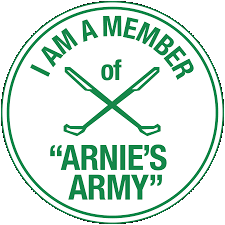


















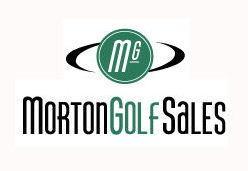
New! Comments
Join the conversation by sharing your comments and opinions about the content on this topic in the box below.